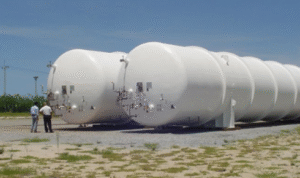1. Airbag Control Module
The airbag control module, also known as the airbag sensor, is a crucial component in modern vehicle safety systems.
2. Understanding the Function
Its primary function is to monitor various sensors within the vehicle and deploy airbags in the event of a collision.
3. Importance of Location
Knowing where the airbag control module is located is essential for maintenance, repair, and replacement purposes.
4. Typically Located Under the Dashboard
In most vehicles, the airbag control module is situated under the dashboard, near the center console.
5. Accessibility
While its precise location may vary depending on the make and model of the vehicle, accessibility is typically a consideration for ease of maintenance.
6. Why Under the Dashboard?
Placing the airbag control module under the dashboard ensures it is well-protected from external elements and potential damage during a crash.
7. Proximity to Airbag Deployment
Positioning the module near the airbag deployment zones ensures rapid communication and response in the event of a collision.
8. Location in Passenger Compartment
Given its critical role in passenger safety, the module is strategically placed within the passenger compartment.
9. Safety Regulations
The placement of the airbag control module is also regulated by safety standards to optimize its effectiveness.
10. Integration with Vehicle Systems
The module is intricately integrated with other vehicle systems to ensure seamless operation during emergencies.
11. Diagnostic Purposes
Locating the airbag control module allows for easier diagnosis of airbag system issues by technicians.
12. Consultation with Experts
For precise location information, consulting vehicle manuals or seeking guidance from automotive professionals is recommended.
13. Vehicle Inspection
During routine vehicle inspections, mechanics often check the airbag control module’s condition and location.
14. Replacement Considerations
In the event of a faulty module, understanding its location is crucial for effective replacement.
15. Compatibility
Replacement modules must be compatible with the vehicle’s make, model, and year to ensure proper functionality.
16. Specialized Tools
Accessing and replacing the airbag control module may require specialized tools and expertise due to safety concerns.
17. DIY Caution
DIY attempts to locate or replace the airbag control module are discouraged due to potential safety risks.
18. Manufacturer Recommendations
Following manufacturer guidelines for maintenance and repairs ensures optimal safety system performance.
19. Impact on Vehicle Safety Ratings
The proper functioning and location of the airbag control module can influence a vehicle’s safety ratings.
20. Future Developments
Advancements in vehicle safety technology may lead to changes in the location and functionality of the airbag control module.
21. Environmental Factors
Consideration of environmental factors such as temperature and humidity may influence module location and design.
22. Collaborative Efforts
Automakers collaborate with safety regulators and experts to continually improve airbag system effectiveness.
23. Consumer Awareness
Educating consumers about the airbag control module’s location promotes awareness and safety consciousness.
In conclusion, understanding where the airbag control module is located is essential for vehicle safety and maintenance.
24. Final Thoughts
Whether for routine inspections or emergency repairs, knowing the location of this critical component ensures the continued effectiveness of a vehicle’s safety systems.




